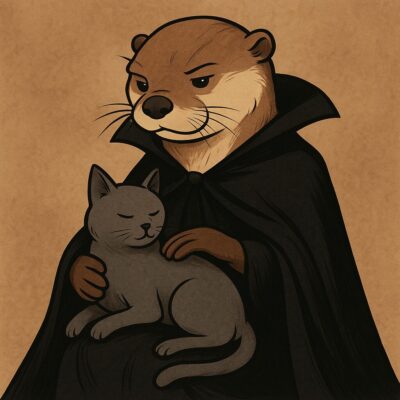It’s Villain Week!
When I first started learning about story structure, I thought the “antagonist” was just a fancy name for the bad guy in a black cloak twirling his moustache and kicking puppies for fun. Simple, right?
But just like the word protagonist, the role of the antagonist is a little more layered—and a lot more interesting.
If the protagonist is the heart of your story, the antagonist is the pressure that makes it beat faster.
The Antagonist Isn’t Always Evil
One of the biggest lightbulb moments in my writing journey was realising that the antagonist doesn’t have to be a villain in the classic sense. They just have to be the person (or force) that stands in the way of your protagonist’s goal.
That might be a warlord, a jealous ex, a rival explorer—or even the protagonist themselves. (Yep, sometimes the biggest obstacle is the person staring back at them in the mirror.)
But let’s be honest. We all love a juicy villain.
And crafting a great one? That’s where the real fun begins.
Everyone Is the Hero of Their Own Story
This was a game-changer for me.
The best villains don’t think they’re villains. They think they’re right.
They have motivations, backstories, pain points, and goals—just like your protagonist. The difference is, their goals clash with your hero’s in a way that brings everything to a boil.
For me, writing villains got a lot easier (and way more satisfying) when I started asking:
- What do they want?
- Why do they believe they deserve it?
- And what happened to them that made them this way?
Mirror, Mirror
A great tip I picked up along the way: your antagonist and protagonist should reflect each other in some way. They might be total opposites on the surface, but underneath, they often share a key trait—ambition, loss, fear, pride.
The antagonist is the dark mirror of your hero. If the hero is learning to open up, maybe the antagonist shut themselves off years ago. If the hero is brave, the villain might be clever and calculating—two sides of the same coin.
That contrast helps both characters shine brighter.
Make Them Powerful
This is something I had to learn the hard way: your villain needs to be strong enough to scare your protagonist—and your reader.
If they’re too easy to defeat, there’s no tension. No stakes. No growth.
Make them smart. Make them unpredictable. Make them just out of reach.
That way, when your protagonist finally stands up to them, we feel that triumph.
But Also… Make Them Human
One of the most compelling antagonists I ever wrote was based on someone I couldn’t stand in real life. But when I stopped making them a caricature and actually thought about what they’d been through—what made them act the way they did—they suddenly became real.
Not justified, necessarily. But understandable.
And that made them so much more powerful on the page.
Final Thought
Writing antagonists used to intimidate me. I worried about making them too cliché, too flat, too obviously evil. But once I started treating them with the same care and curiosity I gave my heroes, everything changed.
Now I look forward to writing “the villain” just as much as the protagonist—sometimes more.
Because at the end of the day, a great antagonist doesn’t just create conflict. They create meaningful conflict—the kind that forces your hero to grow, change, and ultimately become the person they were meant to be.
And next time, we’ll meet the characters who help them along the way (or get caught in the crossfire)—the supporting cast.


